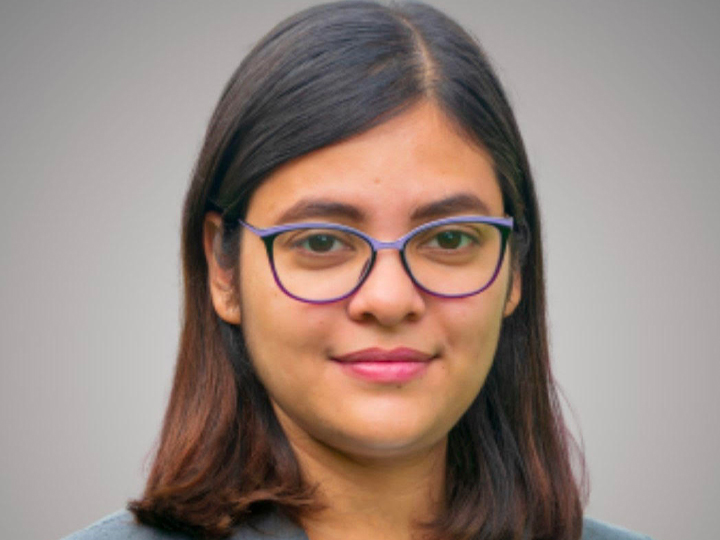A Q&A with Ananya Mondal

The Micro-Credential in Data Science Program, offered by the Hewlett Packard Enterprise Data Science Institute, provides opportunities for students to further their knowledge of data science and hone their expertise in the areas of data management, Python programming, data visualization and machine learning.
Ananya Mondal, a UH graduate student studying for her doctorate in physics, was a participant in the institute’s Micro-Credential in Data Science program. Mondal’s research focuses on building computational models to understand how biopolymers, like DNA, respond to different forces inside a cell. She was asked to share her experience partaking in the innovative program.
What made you want to participate in the Micro-Credential program?
AM: Initially, I did not know that there was a certificate like this, so I started taking courses just to use for my own research. For example: I started off with the Scientific Computing with Python course, because at that point in time, I needed that directly for my research. Then, as I kept taking more and more courses, I came to know that the HPE Data Science Institute was offering a Micro-Credential certificate. I learned that they were doing this by providing courses in machine learning, deep learning and data science. That’s when I was interested in completing the certification – I had already completed Tableau, ParaView and Python courses by then. I thought that it would be beneficial for me to do the machine learning courses, as well. Right now, as I’m applying for different industry jobs, I’m definitely leveraging those skills.
How has the program helped you in your research as a graduate student?
AM: When I was starting out my research, I mostly used C++. The first course I took was not under the Micro-Credentialing program per se, but the HPE Data Science Institute offers C++ in scientific computing. So, I used that knowledge for writing code to cater to my research problems – for example, cluster computing. Python is gaining more credibility and is becoming more user-friendly, with packages like NumPy and SciPy and the ability to handle different arrays. C++ had this problem of memory allocation in arrays, and that’s why I wanted to learn Python.
What are some of your favorite courses and assignments that you did while you were in the program?
AM: I enjoyed the Data Visualization with ParaView and Tableau course a lot. I did not know that these softwares existed, but I enjoyed the visualization. It gave me the freedom to use it later on; I downloaded data and had fun visualizing the results for myself. The second thing that I really liked was the machine learning course because it was very detailed. It really helped me in a lot of interviews because the professor teaching the course started with a lot of fundamentals, and at every point, he gave a lot of examples. When you’re talking to a person, citing examples is very effective for the person to understand the concept. I utilized some of those examples in my interviews, and that had a positive effect.
Why should other students obtain a Micro-Credential in data science?
AM: Academically, if you are writing a lot of code or are in need of learning computation, then this is a great place to start because the pace is not very steep. There is not a very steep learning curve, and you can also make many friends who are at your level, or even a level higher.
The third part is of course: these courses are free! Even if you are not doing computation at any level, but instead are curious as to how to analyze and visualize data, then this can be a very good place to start.